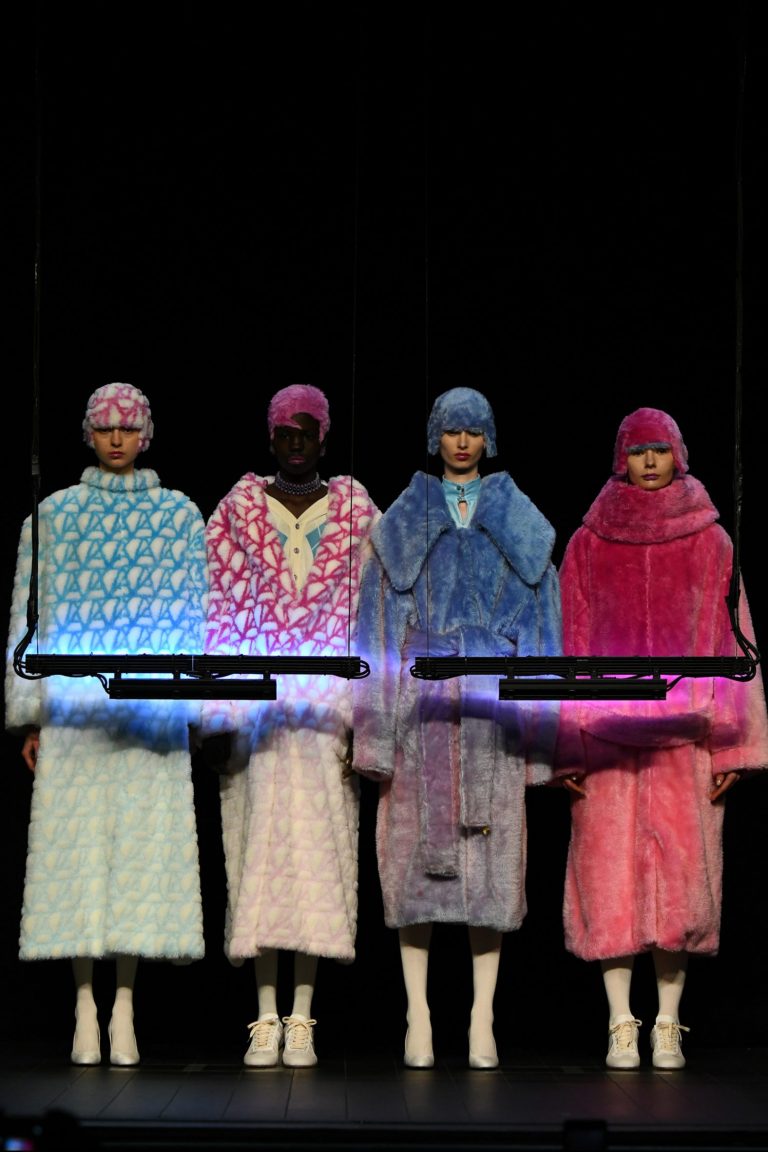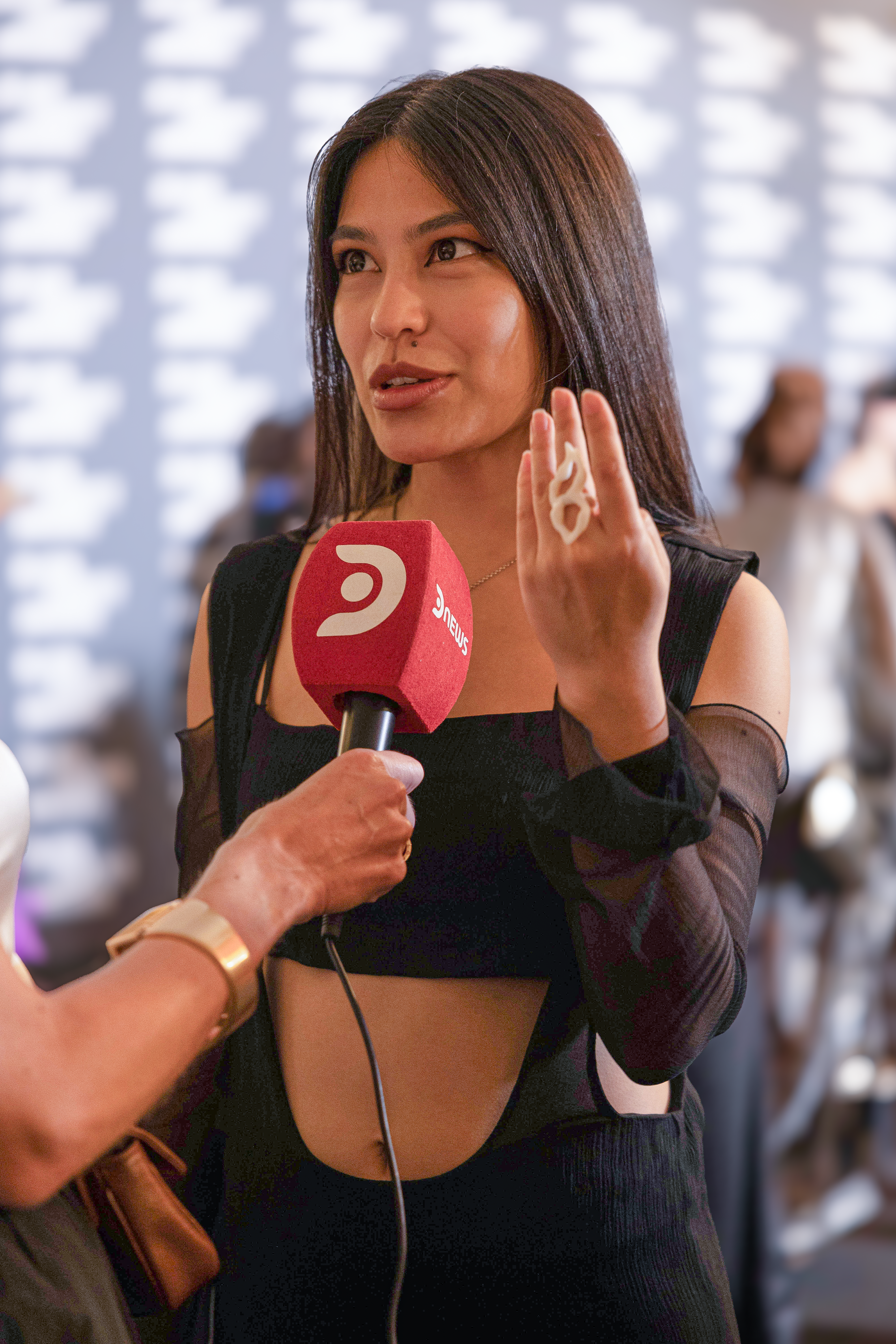Fibrous branches are forming links between biology and fabric production resulting in a new breed of interactive and responsive textiles. Coined as “E-Textiles”, wearable technology is set to make a more regular appearance in the process of fashion design. Signs of this entrancing technology can be traced back to 2018 and earlier, when at the University of Central Florida, researchers experimented with a colour-changing fabric entitled “ChroMorphous.” These battery-powered garments physically changed colour through the use of an external app. Smart clothing rose to the surface with hope to create a more sustainable future in fashion, and is projected to reach a market value of USD 5 Billion by 2027.
As technology advances, electronics become smaller, more durable, light-weight and environmentally conscious. Developments in smart textiles are bestowing life upon inanimate fabrics by weaving in functional ability, responsiveness and interactiveness. GLITCH has rounded up three mind-altering, seemingly animated designs that have harnessed the driving force of E-Textiles.
ANREALAGE’S PHOTOCHROMIC DISPLAY AT PARIS FASHION WEEK
In Paris at the Théâtre de la Madeleine, Japanese designer Kunihiko Morinaga unveiled a collection of colour changing garments that made a statement loud and clear that the fashion industry has no intention of putting smart textiles to bed. Models were scanned by a ray of UV light to initiate the colour-altering effect. By using photochromic materials, garments were transmogrified into an array of ever-changing colours. Morinaga has been experimenting with colour-changing fabric for over a decade and continues to produce collections that have witnesses utterly spellbound.
ADOBE’S “DIGITAL DRESS” REINVENTING THE MEANING OF FAST FASHION
Just recently Adobe left jaws on the floor with their groundbreaking, interactive dress that shifts patterns in the blink of an eye. Revealed by Adobe Research Scientist and brains behind ‘Project Primrose’ Christine Dierk at Adobe Max 2023, the digital dress in Dierk’s words, “brings fabric to life”. Not only is the dress capable of statically switching between patterns but can cycle through a series of animations using embedded sensors. Dierk demonstrated the responsiveness of the dress by twisting from side to side. To the audience’s amazement, patterns swished with each movement as if sentient. Christine Dierk and her team consisting of Gavin Miller and TJ Rhodes designed every detail of the dress with Dierk sewing the final product together. Dierk concluded the presentation by expressing that, “fashion doesn’t have to be static, it can be dynamic and even interactive.”
THE WEARABLE EMOTION TRACKER BY IGA WĘGLIŃSKA
Polish designer Iga Węglińska extracted inspiration from clothings ability to regulate temperature and shield us from harsh environments. Aside from protecting us, clothing also serves as a form of self-expression and often reflects the way we’re feeling on the inside. Węglińska has expanded on this concept by creating ‘Emotional Clothing – Sensory Prothesis Garments’. Putting her PhD in Design to work, Węglińska utilised the mind-body technique of biofeedback in order to track ‘psycho-physiological’ fluctuations in the wearer’s body. Through this technique, garments become an extension of the body, perceptive of changing emotional states. The ‘Emotional Clothing’ project consists of two tops: identified variations in body heat causes one of the tops to morph from black to transparent and lights up in unison with the heart’s rhythm. The other top tracks the wearer’s sweat glands in relation to stress levels and LED lights respond to any changes that occur. Iga’s project serves as a reminder to monitor our body’s signals and respond accordingly just as her garment’s do.
With users in healthcare, military and defence, sports and fitness, transportation, architecture and fashion, E-Textiles has an astonishing projected global market growth rate of US 15.01B by the year 2030. It’s crystal clear that for wearable technology, this is just the beginning.
Written by Ashley Jade Callahan





